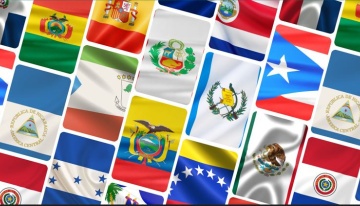5 Myths About Child Hunger Programs in America
More than 13 million children and teens live with food insecurity in the United States. That means that one in six youth don’t know where their next meal is coming from. When kids are hungry, they lack the energy they need to learn, play and thrive. Over time, child hunger can prevent kids from reaching their full potential in life.

In my work as an “Anti-Hunger Hero” for the YMCA, I’ve traveled to many communities across the country where food programs are inspiring staff and energizing youth. These programs are having transformational results. Yet, there are five reasons for not running a food program that I hear often from different communities. Turns out, they are myths and these seemingly insurmountable obstacles can be easily tackled.
So, let’s set the record straight!
MYTH #1. There are no hungry kids in our community. Hunger exists in every community. Yet, it’s easily hidden. Nationally, one in six kids is hungry, but in many communities, this number is higher. Many of us wear blinders when it comes to hunger that’s close to home. In fact, 78% of Americans agree hunger exists, but don’t think it impacts their community. See what hunger looks like in your zip code and be on the lookout for these signs to help determine if children you know are struggling.
MYTH #2. Other groups in our community are already addressing hunger. Tackling child hunger calls for all hands on deck. Food banks are great at preparing meals, but they often struggle to provide enrichment activities that will attract and retain youth. Kids who may have limited access to transportation or feel shame around hunger need more than one option for accessing healthy meals and snacks throughout the day, especially in the summer.
MYTH #3. We don’t have a kitchen or space to prepare food. No problem! Many Ys that I work with partner with a sponsor like a school or food bank to prepare the food or work with a vendor to serve room temperature, healthy options that don’t require a kitchen for preparation or significant refrigeration space. Many communities have overcome this common barrier!
MYTH #4. I looked into this, but got overwhelmed. I don’t know where to start! For anyone seeking a quick and simple introduction to running a food program, we have step-by-step action steps available as well as peer mentor support! Send an email to be connected with a Y that has done this work successfully. You’ll receive a customized consultation and support along the way.
MYTH #5. Our leadership won’t support the program. This is where you can be a change agent. We can provide support to empower your voice and make a compelling case for bringing a food program to your community. Our easy to use toolkit will help you present an informed case to appeal to your leadership, board members, and potential funders.
Ensuring kids have access to the nutrition they need to thrive connects directly to the YMCA mission across all three areas of impact: Youth Development, Healthy Living and Social Responsibility.
I can’t wait to help you provide this service to families in your community! And neither can the kids.
Looking for more tips and support?
Follow #TheYFeedsKids to learn more.




